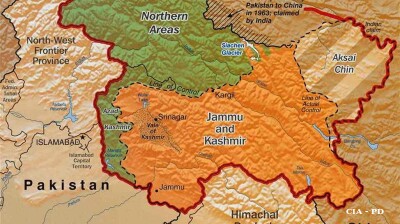India’s used-car market is expected to see sales volumes surpass 6mn units in the current fiscal year (FY2026), according to a recent CRISIL Ratings report. The agency attributes this growth to a combination of value-conscious consumer behaviour, the steady adoption of digital sales platforms, and improved access to vehicle financing.
This momentum has lifted the used-to-new car sales ratio to around 1.4, compared with less than 1.0 just five years ago. Pre-owned vehicle volumes are now growing at more than twice the pace of new car sales, with the market’s value almost equal to that of new vehicle sales.
CRISIL’s analysis shows that the sector’s performance has strengthened after a subdued period. Between fiscal 2017 and fiscal 2024, used-vehicle sales volumes rose at a modest rate of around 5%. However, last fiscal year saw a sharper rebound with growth at roughly 8%, and this year’s expansion is projected to be as high as 10%. The report indicates that the used-to-new ratio’s upward trend signals a structural shift in the market, underpinned by greater consumer confidence in the quality of pre-owned vehicles and the growing convenience of online transactions.
On the supply side, CRISIL notes that the average age of used cars entering the market is falling steadily and is expected to reach about 3.7 years in the current fiscal. This trend reflects faster upgrade cycles, with many owners replacing vehicles earlier than before. Demand patterns are also shifting, with buyers increasingly favouring utility vehicles—mirroring preferences in the new-car segment.
The report underlines that India still has significant headroom for growth, as its used-to-new car sales ratio remains lower than that seen in mature automotive markets worldwide. This gap indicates the potential for further expansion as structural drivers such as digitalisation, financing innovations, and changing consumer attitudes continue to evolve.
One of the key factors supporting the resilience of the used-car sector is its performance during periods of market disruption. CRISIL highlights that volumes held up even during the pandemic and the global semiconductor shortage, both of which curtailed new car production. With rare earth magnet shortages still affecting manufacturing, new vehicle delivery timelines remain extended, prompting some buyers to opt for pre-owned cars for quicker access. First-time car buyers also benefit from a wider variety of models available in the used market, helped by the strong sales of new cars in the post-pandemic period, which have replenished supply.
CRISIL’s study focused on six major online used-car companies, including both manufacturer-backed outlets and inventory-led digital platforms. These businesses collectively account for roughly half of the organised market and about a third of total used-car sales in India. The findings show that despite healthy revenue growth, profitability remains elusive for many players due to high operating costs. Expenses related to vehicle refurbishment, logistics, and customer acquisition are particularly heavy, as the industry is still in an expansion phase.
The report suggests that the move towards offering end-to-end solutions—covering inspection, refurbishment, financing, insurance, and doorstep delivery—could help improve margins over time. Integrated service offerings are seen as a way to enhance customer trust and convenience, thereby boosting sales volumes and repeat business. Additionally, CRISIL expects cost discipline to improve, with operational efficiency measures gradually reducing cash losses. If this trend continues, most players could achieve operating breakeven within the next 12 to 18 months.
In the meantime, companies’ credit profiles will largely hinge on their ability to secure timely funding and maintain adequate liquidity to support growth plans. CRISIL estimates that the sector will see capital expenditure in the range of INR8–10bn during the current fiscal year, primarily directed towards expanding inspection hubs and strengthening technology infrastructure.
Organised players have collectively raised more than INR140bn in equity since fiscal 2019, reflecting strong investor interest in the sector. However, in the past two years, the focus has shifted towards improving profitability and operational efficiency rather than aggressively pursuing market share. Fundraising has become more selective, with companies seeking to balance growth ambitions with the need for financial sustainability.
The report also points out that bank lending to the sector remains constrained, largely due to ongoing cash burn and thin or negative margins. However, CRISIL expects lending activity to improve, particularly for inventory-led players that can offer tangible collateral. This shift could provide additional funding avenues and reduce the reliance on equity capital for expansion.
Looking ahead, CRISIL maintains a positive outlook for the used-car market, describing it as structurally strong with the potential for sustained growth. The report notes that while demand drivers remain firmly in place, the availability of quality inventory will be an important factor in determining the sector’s trajectory. Ensuring a steady supply of relatively young, well-maintained vehicles will be critical to meeting customer expectations and supporting further market expansion.
Features

BEYOND THE BOSPORUS: Prosecutors make move on “fictitious export schemes” of Istanbul Gold Refinery
Observers point to intra-regime gangs seizing each other’s wealth, remember Erdogan’s “Hello Fatih” phone calls and ponder whether wanted man Turgay Ciner is in London.

Taliban visit to India upsets Pakistan, signals New Delhi's changing Afghan posture
Coinciding with the visit, Pakistan conducted military operations inside Afghanistan, followed by airstrikes on multiple border towns. Retaliation against Pakistan's police training facilities and border outposts followed.

Pakistan’s India-shaped chip on the shoulder, and why a peaceful coexistence is as elusive as ever
Pakistan must first redefine how it sees India - not solely as a threat to be contained but as a neighbour with whom coexistence is unavoidable. That psychological leap has eluded generations of Pakistani leaders.

Trump shocked by China’s move on rare earths, threatens more 100% tariffs
"Some very strange things are happening in China!" Trump wrote in a post on his Truth Social account on October 10, adding "They are becoming very hostile."



